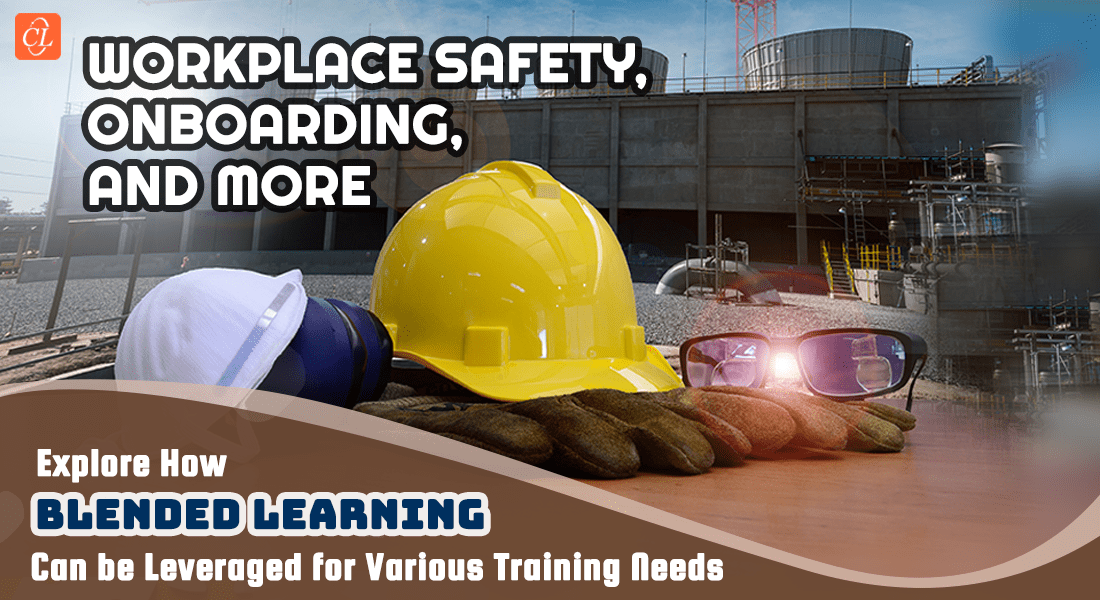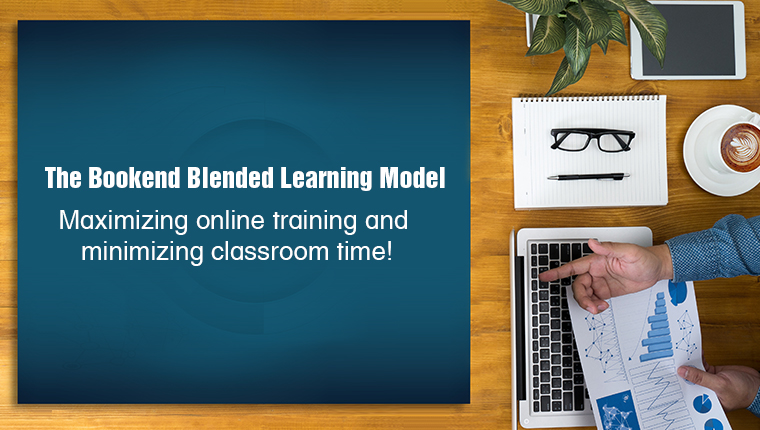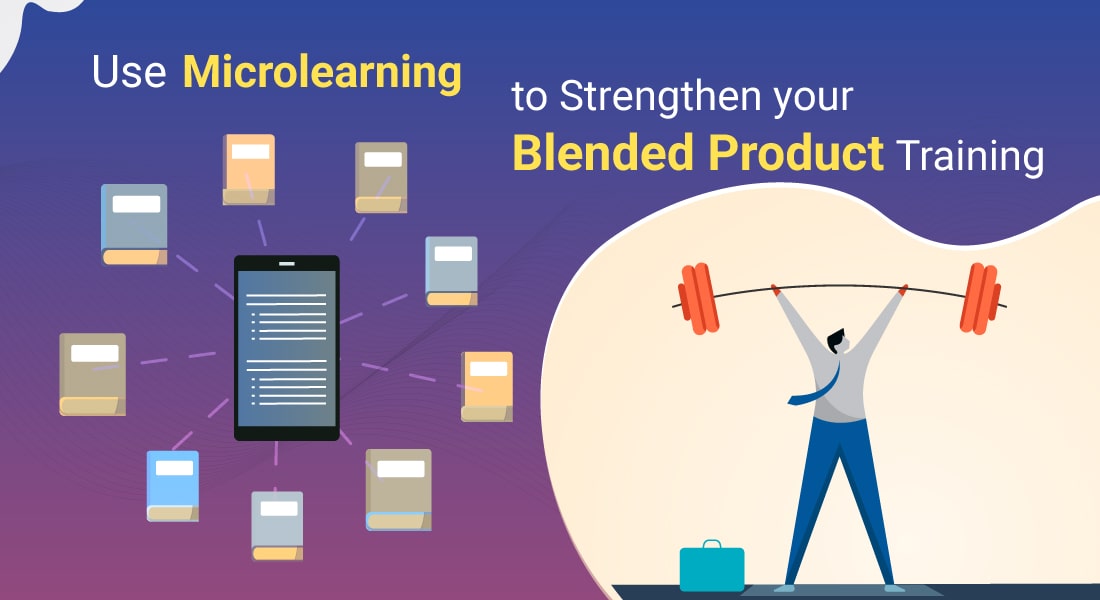How to Leverage Blended Learning Solutions for Different Training Challenges

For years your company may have relied on classroom training to impart knowledge. However, as technological transformation sweeps through the world with remote workplaces, an instructor-led, “one size fits all” strategy is no longer ideal. Blended learning uses formats like virtual instructor-led training (VILT) and microlearning to simulate the learner and provide opportunities for interaction, distance learning, practice opportunities, and real time learning.
Many firms are now combining instructor-led training (ILT) with online classrooms. Blended Learning is a popular and successful training strategy because it allows employees to learn at their own pace irrespective of their location It also allows them to connect with their peers during their training sessions online.
We need to integrate classroom training content with other online eLearning formats to meet the needs of today’s dynamic business leaders. Learners get a more comprehensive learning experience when ILT and eLearning are combined.
Where Can Blended Learning Be Used?
Blended Learning Can Be Used For:
- Safety Training
- Leadership Training
- Employee Onboarding
Let’s look at some of the common challenges in training that blended learning can help you overcome.
I. Blended Learning for Safety Training
Employees try and avoid their organizations’ health and safety compliance training. Though no one is to blame, the subject can be tedious.
It is erroneous to employ only one learning approach when creating health and safety training programs. Your employees would quickly lose their motivation if they continued to use a singular learning format. Make the change to blended learning today and gain tips on how to use this learning strategy when conducting occupational health and safety training.
The blended learning method involves classroom, online, mobile, and collaborative learning techniques. The blended learning process involves combining two or more learning strategies. There are advantages and disadvantages of every type of learning strategy including classroom learning, online learning, mobile learning, and microlearning. The limitations of each technique can be overcome by using the blended learning strategy.
→ Download Checklist: Is Blended Learning Right For Your Corporate Training?
1. Set Safety Objectives
It’s just as vital to identify the learning objectives for your blended learning course as much as it is for any other type of training. Companies usually have specific health and safety training requirements. You need to work together with your Subject Matter Experts to accurately develop the learning objectives for your blended learning course on health and safety. This will aid you in comprehending possible risks, threats, and operating methods for this type of learning strategy.
2. Allow for Collaboration
You’ll need to establish personal ties amongst your learners to generate more interest and participation in your course. Role-playing exercises, group activities, and games are a few techniques used in the classroom to promote active learning and the sharing of ideas. Experienced professionals and senior employees participating in your health and safety training vis-a-vis video conferences and webinars can also foster teamwork.
3. Ensure Assessments are Available Online
In blended learning you can choose the appropriate delivery format for each phase of the course. Transferring learner assessments online is a preferable time-saving choice for the instructors. You can check the progress of your learners’ evaluations such as quizzes, tests, and examinations by uploading them to a Learning Management System (LMS). You can also record your learners’ scores and send them their certificates.
II. Blended Learning for Leadership Training
Many businesses no longer offer leadership training in the classroom because due to the pandemic it has become irrelevant. Instead, blended learning transforms the classroom using formats such as VILT and microlearning. It offers distance learning, interactive learning, and practice opportunities. Here are a few points to remember when implementing blended learning strategies your leadership training program.
1. Situational Awareness and Contextual Information
Leadership training is a distinct form of training. The learners’ soft skills, ability to think on one’s feet, critical thinking, and strategic decision-making abilities must be developed. eLearning is a fantastic platform to build leadership skills. Using the procedures below, you can provide your learners with all the contextual knowledge they need to become great leaders.
- Using branching scenarios, learners can assess situations, think critically, and make judgments that are best for their circumstances. Learners can also be trained in the best and most optimal course of action to take when faced with different types of situations that can arise in a workplace.
- Simulation-based training prepares learners for real life situations in the workplace and allows them to practice their newly learned skills in a safe environment.
- Case studies guide learners through the process of problem solving. Learners are exposed to the process from the onset of the problem, its examination and finally how the problem is addressed and the resulting outcomes. They also use the knowledge that they have gained while in training.
2. Effective Leadership Development and Social Learning
Effective leadership development does not take place in isolation. Social learning or learning together impacts leadership training and vice versa. You can utilize social learning tools to inspire learners to collaborate, exchange work-related ideas, and learn from their bosses as well as from industry experts. They include discussion boards, chat rooms, social media sites, and virtual events and are an excellent means of reaching out to learners and recognizing individuals with leadership potential.
3. Provide Training That is Targeted to the Needs of the Person
The primary purpose of training is to improve on the job performance. Your duty as a training manager does not end with providing learners with accurate knowledge. You must also guarantee that appropriate assistance is provided whenever it is required. To provide performance support, you can employ digital learning tactics such as “how to videos”, visual descriptions of a process through “infographics,” as well as questions, acronyms, or visual cues on digital “flashcards”. All of these are effective in enhancing knowledge retrieval and retention.
III. Blended Learning for Onboarding
It isn’t just about recruiting exceptional employees. You also need to retain them to be successful. An efficient new employee onboarding program guarantees that your new employees receive adequate assistance during their transition into your company and that they remain assets to your company in the long run. Overall, you can employ a blended learning strategy that can provide a mix of different types of training to help strengthen your onboarding program. Keep the following points in mind when starting to use blended learning strategies for your new employee onboarding.
1. Brand Representation
Videos are extremely successful when it comes to transmitting large amounts of data in a short amount of time. This in turn maximizes productivity and saves time when onboarding new employees. You can use fascinating animated videos to walk your new employees through your company’s history, or you can request your senior management to record a personal message on video that emphasizes your company’s principles and culture.
2. Performance Support
Onboarding doesn’t end in the classroom be it virtual or in person. You must also provide performance assistance to your learners when required on the job. Bite-sized microlearning modules provide just-in-time performance assistance, that is critical when learners want to successfully complete a task. Learners can improve their task-related knowledge by looking at dos and don’ts infographics or interactive process maps. As a result, your learners can ascend the learning curve for improved productivity.
3. Role Clarity
Scenario-based online training includes recreating real-life situations at work using the relevant narrative, backdrop, characters, and dialogues. You can also conduct real-time group activities vis-à-vis VILT. This allows your new recruits to put their newly learned information to good use and understand their duties and responsibilities in a fun and engaging way.
Summing It Up!
Blended learning is a creative and effective technique to ensure that your learners grow in terms of knowledge, and this in turn results in significant returns of investment and overall corporate success. Blended learning has several key benefits, and its hybrid strategy can help you achieve your training goals.
Want more insights on whether blended learning suits your corporate training needs? Well, download this checklist to get answers!
Editor’s note: This post was originally published in 2022 and has been updated for comprehensiveness.





